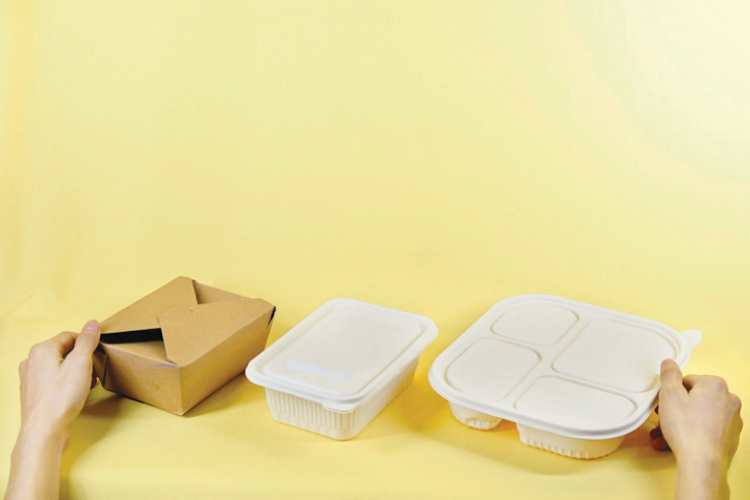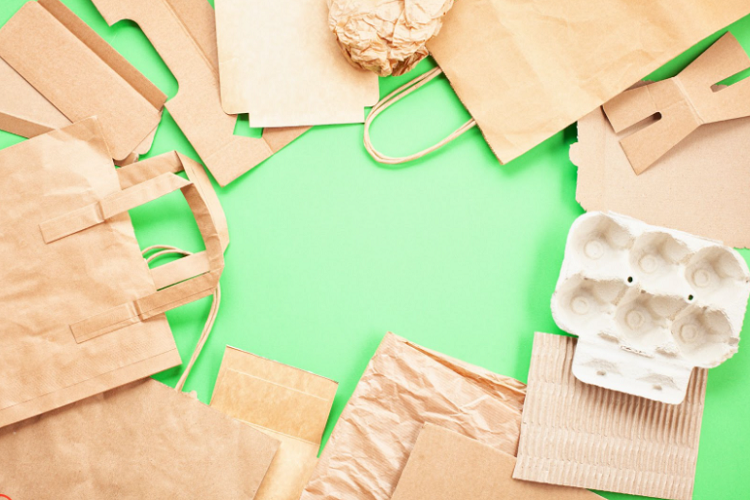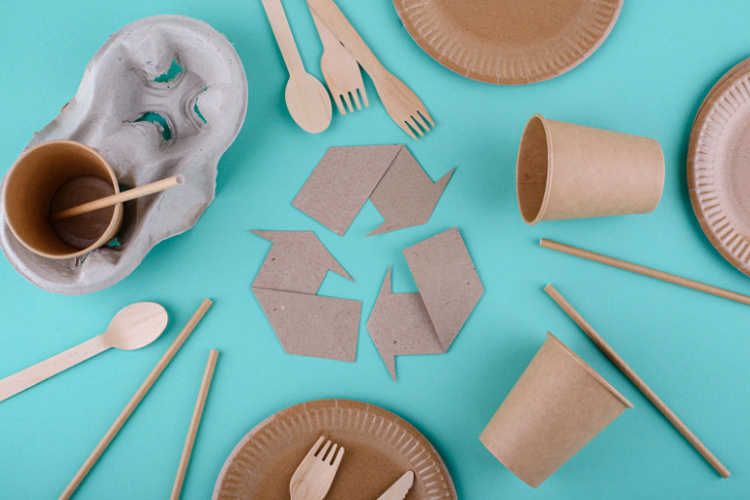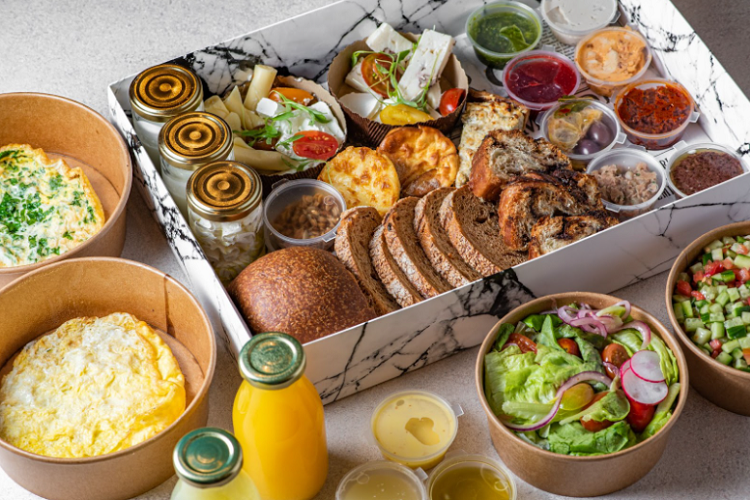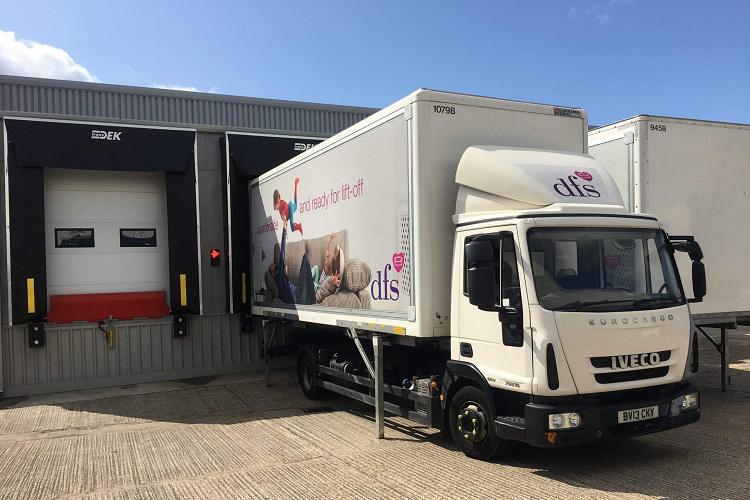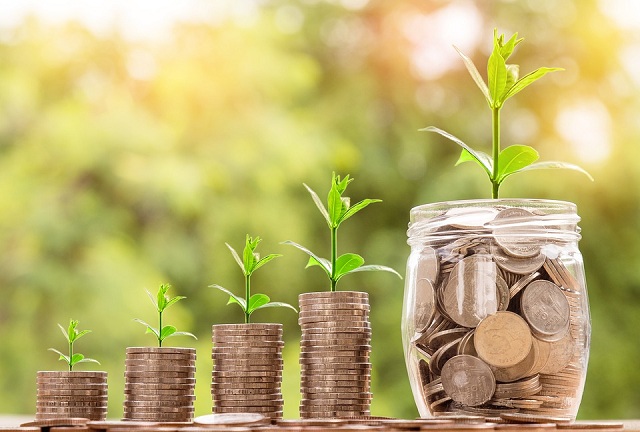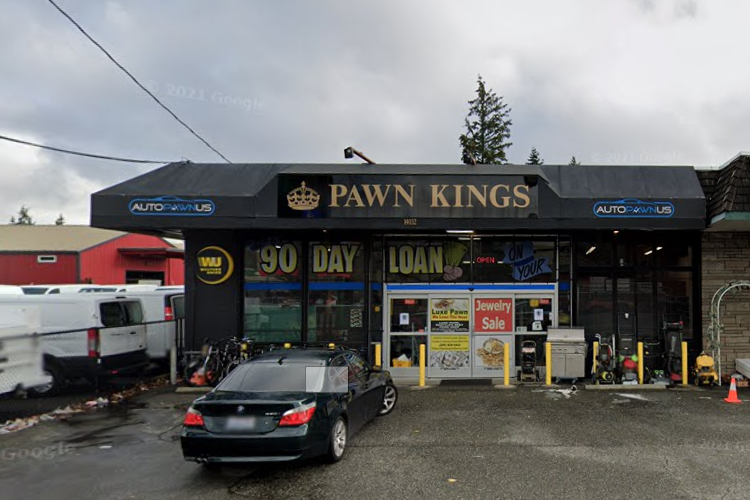As more people become aware of the environmental impacts of single-use plastic packaging, sustainable food packaging has become increasingly popular. But how do you know which type of sustainable food packaging is best for your needs? In this blog post, we’ll explore the different types of sustainable food packaging and the pros and cons of each. Read on to learn more!
What is Sustainable Food Packaging?
Sustainable takeaway food packaging is an important environmental consideration when it comes to reducing the amount of waste produced from food items. This type of packaging is specifically designed to combat the issue of excess single-use packaging materials which are so commonly associated with takeaway food.
By investing in sustainable takeaway food packaging like paper bags and paper bowls, people can help to reduce their environmental impact, as well as demonstrate their commitment to helping make our planet a greener place for everyone.
Types of Sustainable Food Packaging
Sustainable packaging is becoming increasingly important for businesses in the food industry. Common types of sustainable food packaging include compostable containers, reusable bags and containers, and biodegradable materials like paper and cardboard.
- Compostable containers are made from natural items like plants, vegetables, or grains, which can be broken down into the soil over time.
- Reusable bags and containers are made from long-lasting materials such as metal or plastic, which can be used over and over again.
- Biodegradable materials such as paper and cardboard are great alternatives to single-use plastics as they can easily break down naturally in the environment without leaving a trace of waste.
However, sustainable takeaway food packaging is also a great way to help protect the environment. By reducing the amount of non-biodegradable materials that enter the waste stream, these types of packaging offer an effective and sustainable solution for businesses and consumers alike.
Compostable Materials
Consumers and businesses are becoming increasingly aware of their impact on the environment. One of the ways this can be achieved is through sustainable packaging made from compostable materials such as plant-based plastics and bioplastics.
Sustainable packaging is an important step toward a greener future. Materials such as bioplastics, paper, cardboard, and compostable plastics are some of the most popular types of sustainable packaging that have a lower environmental impact than traditional plastic packaging. Not only are these materials better for the environment, but they are also certified safe for use with food products. As consumers demand more eco-friendly options from brands, sustainable packaging is becoming increasingly important to ensure our planet remains healthy and habitable.
However, compostable packaging is not the only type of sustainable packaging. Reusable packaging saves resources by reducing the need for single-use items that can be washed and reused. Recyclable packaging can be collected, processed, and reused to create new products without compromising on quality or safety. All these types of sustainable packaging can work to reduce waste, spark innovation, and promote a circular economy.
Biodegradable (Recyclable) Materials
One of the main types of sustainable packaging includes recyclable materials such as cardboard and paper. These materials can be used to create food packaging that not only reduces waste but also serves as an economical option for many businesses.
Sustainable packaging has become an increasingly popular movement, one that is focused on finding creative and environmentally friendly ways to package items. One type of sustainable packaging material is bioplastic. Bioplastics are made from renewable sources such as corn-based polylactic acid (PLA), which can then be used to create food packaging. It is recyclable, compostable, and biodegradable, making it a fantastic choice for companies wishing to reduce their environmental impact while still providing quality items for their customers.
However, sustainable packaging does not have to be made out of recycled materials. There are other alternatives, such as beeswax wraps, that can be used to package food sustainably while still maintaining its freshness. Beeswax wraps offer an effective solution for reducing plastic waste, thereby offering a viable alternative for more eco-friendly packaging solutions.
Reusable Materials
Sustainable packaging is becoming increasingly popular as consumers become more aware of its environmental impact. Many types of reusable materials, such as glass, metal, and even paper, can be used to package food sustainably.
Sustainable packaging, such as paper, glass, aluminum, and wood, provides an eco-friendly alternative to plastic materials. These types of packaging can easily be recycled and reused, reducing waste and helping to minimize our overall environmental impact. The use of sustainable packaging also supports responsible consumption habits and helps to conserve natural resources for future generations.
Finally, sustainable packaging comes in many forms, including reusable materials like glass or metal containers. These materials often have a much longer lifespan than other types of packaging, meaning they can be used multiple times before needing to be disposed of properly. This helps reduce the need to create new packaging and minimize the amount of waste sent to landfills. Sustainable packaging is becoming increasingly important as more businesses prioritize sustainability initiatives.
Pros of Sustainable Food Packaging
Sustainable packaging is a rapidly growing area of research and development, with companies aiming to reduce the environmental impact of their products. It generally refers to packaging that is designed to be reused or recycled, reducing the amount of single-use material in landfills. It is also often made from renewable materials such as plant-based plastics or bamboo fibers. There are other ways that companies can make their packaging more sustainable. For instance, some people choose thermal labels over inkjet printing because they use less plastic and don’t need adhesive tape. In the end, it is hoped that ongoing developments in environmentally friendly packaging will help businesses reduce the negative effects of product distribution on the environment.
Besides these types of sustainable packaging, businesses may also decide to use thermal labels for food packaging. Thermal labels are heat-sensitive labels that are used with direct thermal printers. They provide a cost-effective way of labeling products while still contributing to sustainability goals by using fewer resources along the supply chain. With the use of sustainable food packaging and thermal labels, businesses can reduce their environmental footprint while also helping to reduce waste and preserve resources.
Cons of Sustainable Food Packaging
Sustainable food packaging often comes with a higher price tag compared to traditional materials like plastic. Thermal labels are one example of sustainable packaging, as they don’t require extra adhesives or glues to stay in place. These labels are made from paper and are heat-activated, making them both cost-effective and eco-friendly. Additionally, thermal labels can be recycled alongside other recyclable paper products.
Sustainable packaging materials come in various types, from thermal labels to compostable shipping materials. However, it can be difficult to source these types of products in certain parts of the world.
Next, when it comes to takeaway food packaging, it is important to consider the longevity of materials. While some types of sustainable packaging are available, they may not be as strong or long-lasting as traditional materials and require more frequent replacement.
Are Paper Bags Sustainable?
Paper bags can be used as a replacement for plastic bags for dry food products. Bagitan Packaging, a China-based company, offers a variety of paper bags that will suit your needs. There are many paper bag options available for groceries. These include colorful paper bags to make visual presentations at parties, eco-bags made of recycled materials, and bakery bags that can be used for bread safety. These scenarios are common in daily life, so you might think that only paper bags are necessary.
Let’s say you are looking for sustainable paper bags that are stylish and attractive. There are many options available, including packaging and promotion. Recycling paper bags can help reduce waste and promote sustainability. This type of packaging is made from recycled paper and can reduce the amount of material that must be produced. Paper bags can be used to package goods economically and make it easy for customers to find what’s inside. These include baguette bread bags and bread paper bags with windows. These bags are customizable and come in a variety of colors.
These paper bags will likely biodegrade after being used and end up in the environment. Paper bags have a lot of benefits, but using them excessively can be bad for the environment. Compared to plastic bags, they produce more air and water pollutants. It is better to use paper or plastic bags, depending on the situation.
Paper bags are an environmentally friendly packaging option. When properly disposed of, paper bags can be easily recycled, reducing waste. For consumers and businesses, paper bags can be an economical and practical way to package goods.
We must be careful and wise when choosing sustainable paper bags. To maintain a healthy environment, it is important to choose packaging products that are of high quality and decent. This paper bag is better than plastic bags when carrying groceries, presents, or dry goods. It is critical to be more knowledgeable to find long-lasting, high-quality, and safe products.
Wrapping up
In conclusion, sustainable food packaging is a must for any business that wants to stay competitive in the market and meet its customers’ expectations. When choosing a type of sustainable food packaging, it’s important to consider the benefits and drawbacks of each option, as well as the type of product you’ll be selling. By doing this, you can ensure that you choose the right type of packaging for your business and keep your customers happy.
Cyrel Nicolas is the head of the marketing initiatives at GJK Waterproofing Services, a highly trusted and certified waterproofing contractor in Sydney. Australia that provides services to commercial buildings, high-rise story complexes, and residential structures for over 25 years. He has a long history of serving as an online marketing consultant for other businesses. He sees the business becoming well-known in the community and the leading waterproofing provider for all your needs.

